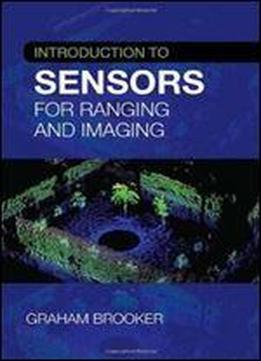
Introduction To Sensors For Ranging And Imaging (electromagnetics And Radar)
by Graham Brooker /
2009 / English / PDF
48.5 MB Download
This is a comprehensive textbook and reference that provides a solid background in active sensing technology. Beginning with a historical overview and an introductory section on signal generation, filtering and modulation, it follows with a section on radiometry (infrared and microwave) as a background to the active sensing process. The core of the book is concerned with active sensing, starting with the basics of time-of-flight sensors (operational principles, components), and goes through the derivation of the radar range equation, and the detection of echo signals, both fundamental to the understanding of radar, sonar and lidar imaging. Several chapters cover signal propagation of both electromagnetic and acoustic energy, target characteristics, stealth and clutter. The remainder of the book involves the basics of the range measurement process, active imaging with an emphasis on noise and linear frequency modulation techniques, Doppler processing, and target trackingThis is a comprehensive textbook and reference that provides a solid background in active sensing technology. Beginning with a historical overview and an introductory section on signal generation, filtering and modulation, it follows with a section on radiometry (infrared and microwave) as a background to the active sensing process. The core of the book is concerned with active sensing, starting with the basics of time-of-flight sensors (operational principles, components), and goes through the derivation of the radar range equation, and the detection of echo signals, both fundamental to the understanding of radar, sonar and lidar imaging. Several chapters cover signal propagation of both electromagnetic and acoustic energy, target characteristics, stealth and clutter. The remainder of the book involves the basics of the range measurement process, active imaging with an emphasis on noise and linear frequency modulation techniques, Doppler processing, and target tracking.Extensive use of worked examples based on sensors that the author has developed or worked on during the past 28 years.
Examples are featured that illustrate the process of designing a sensor for a particular application, ranging from such diverse topics as the design of a ship-borne fire control radar to a UAV based lidar scanner to detect locust swarms. For a broader appeal, complicated mathematical derivations are avoided unless absolutely necessary, and electronic details of the sensors are limited to block diagram and algorithm level. There are 572 figures of which about 20 per cent are photographs, the remainder drawings with 25 tables.











